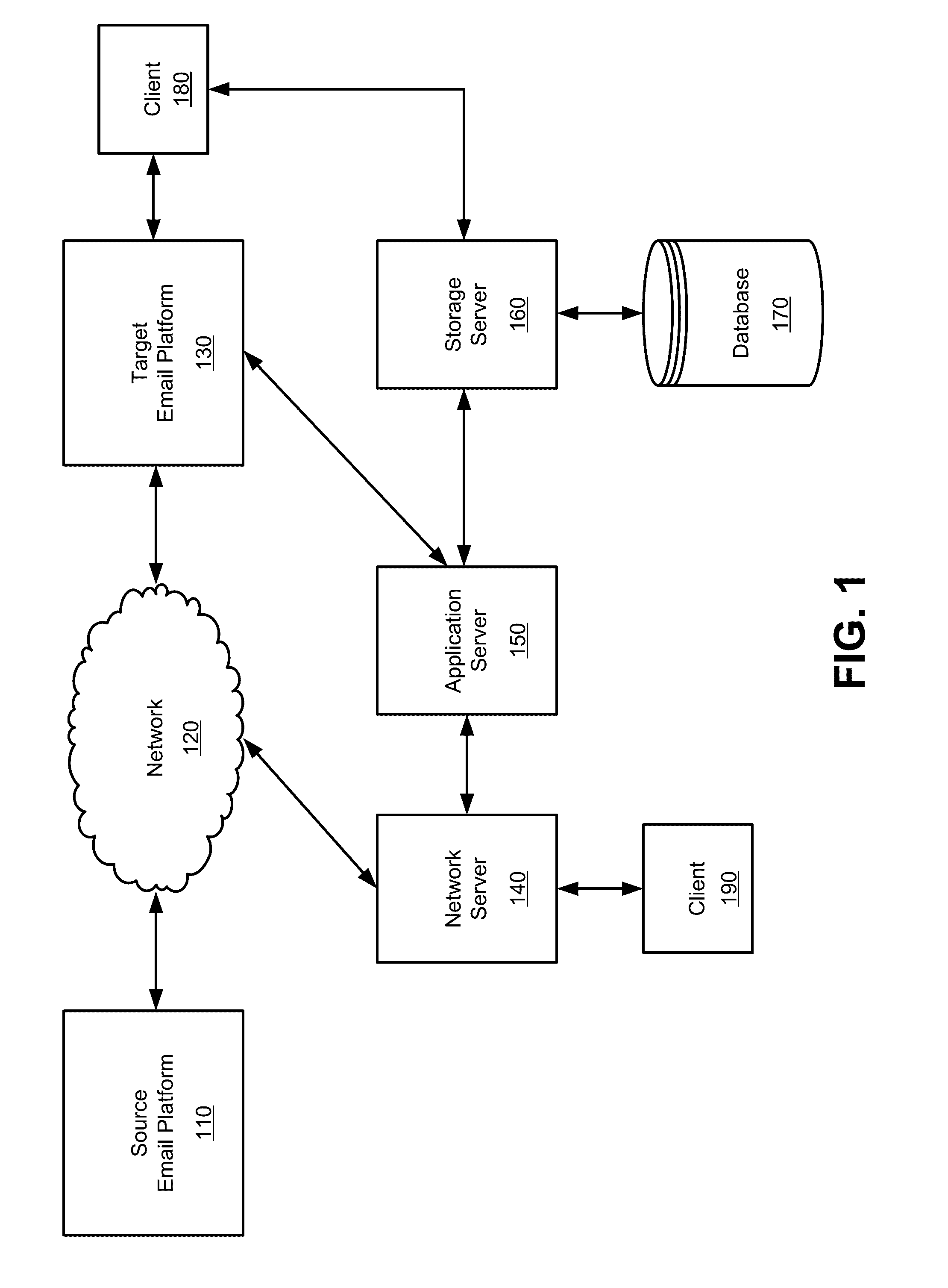And yet, such migrations continue to present a host of problems and difficulties.
Given the sheer quantity and size of mailboxes and emails in use today, from small businesses with only a handful of registered email accounts to Fortune 500 companies with tens of thousands of registered accounts, businesses are struggling with the fact that migrating between email platforms can be expensive, time-consuming, tedious, and error-prone.
(Round Rock, Tex.) have provided businesses with significantly enhanced tools for automatically migrating between email platforms, one problem in particular has persisted in the industry—handling large email attachments.
Architects and other users who routinely send large email messages or attachment files (e.g., CAD files) are particularly susceptible to experiencing these problems.
While businesses face no shortage of options when selecting an email platform, not all platforms enforce the same attachment size limits.
When two email platforms contain different attachment size limits, migrating between them presents a significant problem.
In this common
scenario, the migration process will ultimately fail or—at best—be characterized by poor data fidelity as emails with attachments above 50 MB are lost or migrated without their attachments.
Existing migration solutions face other obstacles as well.
In other cases, problems may arise because a message or file contains encrypted content (e.g., messages residing in an IBM Notes® source platform, which uses a proprietary
encryption methodology), corrupted content, or because the message or file resides in a personal archive that is
password protected (e.g., a personal storage table or “PST” file).
Given these issues, businesses are unable to reliably preserve their data when migrating between certain hosted email platforms.
This significant problem has persisted in the industry despite previously attempted solutions.
One inadequate approach is to identify large attachments in the source platform prior to migration and then either delete the attachments or manually move them to an alternative storage platform to avoid causing failures during migration.
That approach, however, requires significant manual effort and inevitably results in lost data due to
human error or, at a minimum, a broken association between the attachment and the original email message.
Another inadequate approach some have attempted involves reporting.
The reporting method suffers from many of the same limitations as the manual approach described above.
Notably, many solutions that leverage this approach also fail to offer any guidance on how to preserve data fidelity or maintain the association between the removed attachment and the original email message.
Solutions like AttachThis™ and DropThis™ from Dell
Software Inc. have proven useful for reducing the number of attachments maintained in an email platform, but they cannot be applied to automated migration processes.
In addition to being unsuitable for use during migration between email platforms, AttachThis and DropThis require every individual email user to download and install the add-ins on his or her local
client.
As a result, although they are quite useful for certain applications, the add-ins are difficult to uniformly adopt or implement across an entire enterprise email platform.
The same limitations significantly diminish the utility of a similar yet open-sourced mail filtering tool called MIMEDefang.
In addition to being unsuitable for automated migration processes, MIMEDefang also lacks the security features and other functionality necessary to make it serviceable on an enterprise-level.
On top of the limitations discussed above, previously attempted solutions also fail to provide any automatic response functionality that equips users with suitable alternative options for acting upon email messages and related attachments that cannot be migrated or archived.
Nor do previously attempted solutions provide administrators with the ability to specify a criteria, or set of rules, for messages or files that the business does not want migrated or archived.
Existing migration solutions also provide limited
contextual information about migrated email messages, related attachments, or other files that have been modified during the migration process.
Faced with those restrictions, most users cannot quickly determine whether the content of the attachment is relevant or important.
Instead, users must individually open each attachment to assess its relevancy or importance—a process that is not only laborious and inefficient for the user, but is also wasteful of the limited computing resources of the user computing device, the email platform, the hosted storage platform, and the network in general.
The same problems discussed above apply equally with respect to these social networking platforms, which—like many hosted email platforms—enforce predetermined limitations on the size of files that may reside within the platform.
Current archiving solutions face many of the same limitations discussed above with respect to migration operations.
 Login to View More
Login to View More  Login to View More
Login to View More 


